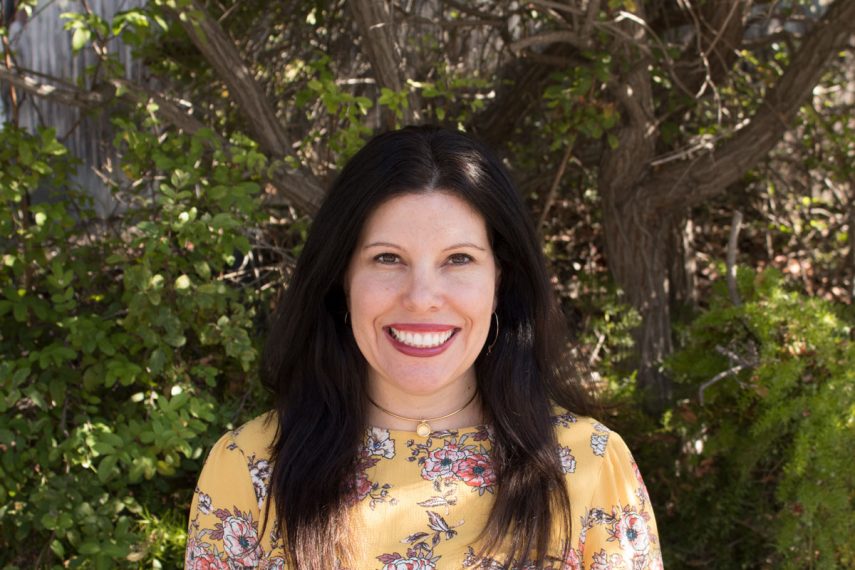The Healing Power of Creative and Experiential Therapies: An Interview with Kayla Karesh

Creative and experiential modalities are emerging as vital components of comprehensive mental health treatment programs, opening up new paths to healing that go beyond traditional talk therapy. Kayla Karesh discusses how, by harnessing the power of art and a variety of experiential therapies, you can broaden the scope of recovery in a way that leads to deep integration and lasting change.
There is something healing about immersing yourself in a process of creation, pushing yourself to try new things, and engaging in recovery with your whole self, mind, body, and spirit. Through these experiences, you open up new avenues for emotional processing, expression, and discovery that expand the limits of what you thought was possible. They change you. They reveal you.
While mental health treatment has traditionally happened within the confines of the therapy room, the mental health community is now increasingly recognizing the transformative power of creative and experiential therapy. Kayla Karesh, Clinical Director at BrightQuest Treatment Center in San Diego, sees the profound impact these therapeutic modalities can have in the lives of her clients every day. In this interview, she discusses how, at BrightQuest, we integrate a range of creative and experiential therapies in client treatment plans and shares her perspective on how these approaches work to create holistic healing for people struggling with mental illness.
The Power of Art
The therapeutic value of creative production isn’t a recent discovery. Its lineage can be traced back to the late 18th century, and artists used creative production to give expression to inner emotional states long before that. But as a formal therapeutic discipline, art therapy is young—less than a century old—and has risen rapidly in popularity as empirical evidence demonstrating its value mounts. It has been shown to greatly relieve psychological suffering and improve outcomes for a broad spectrum of mental health disorders.
What makes art therapy so effective? Kayla believes its success can be attributed to the way the creative process engages you in novel, non-verbal communication, both with yourself and with others. “One of the most interesting things about art therapy is that it expands the imagination,” Kayla tells me.
You can go into right-brain mental spaces that may not be as easily accessed orally. It can reveal unconscious process through image creation or description of imagery that might not otherwise have emerged via talk therapy. It’s also a really neat space to play with challenging topics that a client might be struggling to articulate or even be able to talk about.
Using the medium of art, you can tap into parts of yourself you may not be able to access using traditional therapies, opening up the door for greater self-expression and insight. This can be particularly valuable for people who have a history of trauma, psychosis, or who have high anxiety, as it gives them a new language for talking about and re-imagining difficult experiences.
“If clients aren’t able to communicate what is going on for them, then it’s harder for the therapist to be able to develop tools that can be used with them so that they can respond to distressing stimuli,” Kayla explains. “If they are drawing it out and then describing what’s happening for them, then they also have the ability to draw something different about it. You don’t necessarily have to talk about it. Even though talking is typically a part of the art therapy process, it doesn’t have to be.”
Having observed the profound changes made possible via art therapy, here at BrightQuest we have recently expanded our art therapy program, offering both art therapy groups and individual art therapy sessions for all clients. The new art therapy studio allows art therapy sessions to be conducted at any time and, with the guidance of registered art therapists, even clinicians who are not registered as art therapists can employ a variety of art therapy techniques within regular talk therapy sessions.
Experiential Therapy at BrightQuest
Art therapy isn’t the only cutting-edge therapeutic modality employed by BrightQuest to complement traditional individual psychotherapy and open up alternative paths to healing. We also integrate a full range of experiential therapies that allow our clients to engage and participate in their recovery work in new and novel ways.
Psychodrama
“We use psychodrama in the form of improv,” Kayla tells me. Psychodrama offers space for clients to take on new roles and experiment in different ways of engaging and imagining scenarios from perspectives other than their own. In doing so, you are able to expand your emotional vocabulary and look at your situation with fresh eyes to gain new clarity. “They get to practice being in the role of their parent or in the role of a listener when they struggle to listen to people. We use a lot of techniques from theater combined with therapy and it’s a lot of fun.”
Equine Psychotherapy
BrightQuest San Diego partners with Rocking Horse Ranch to provide clients the opportunity to participate in equine-assisted psychotherapy, a relatively new form of therapy in which interactions with horses are used to foster greater self-awareness.
“What happens is that our clients are asked to do a task that involves a horse or another animal on the ranch. The client is challenged to shift how they’re responding to the animal,” says Kayla. “It’s really beautiful to watch how you can see parallels between the way the client engages with an animal and how they engage with other humans. The animal forces them out of a comfort zone they might have when engaging with people.” In learning how to modulate thoughts, feelings, and behaviors to create positive interactions with animals, you learn how to better regulate and understand yourself and your relationships.
Adventure Therapy
Adventure therapy takes clients out of the office into nature or environments that typically involve some level of risk, discomfort, or engagement with a task or a challenge that they would otherwise not be familiar with. The purpose is to encourage insight and growth via doing something rather than simply talking about it.
“It might involve rock climbing and there would be some psychotherapeutic conversation along the way, some process of what it was like to face different types of challenges,” Kayla explains. As you participate in and process the challenge, you observe where you struggle and how that parallels other areas of your life. “You’re able to look at what you tell yourself about what you’re able to do and what you’re not able to do, and where it might be possible to shift your perspective.”
Deep Integration and Lasting Change
People who come to BrightQuest have emotional and behavioral struggles that require sustained therapeutic engagement and cannot be fully addressed within short-term treatment programs. Long-term treatment opens up opportunities for truly holistic healing and the creation of a strong foundation for ongoing wellness. “The thing about participating in treatment within our structure is that we are able to help our clients develop skills for life,” Kayla says.
That means touching upon all aspects of life and it means learning how to engage with your environment in ways that are new and force you out of your comfort zone and to take risks. When you are in a long-term environment you can explore what is it that’s going to sustain you after you’re in this space and make small changes over time so that you can maintain them throughout the rest of your life.
In contrast to short-term programs that encourage you to make sweeping changes in a very short time, BrightQuest allows you to deeply integrate new skills in sustainable ways.
Creative and experiential therapy is a critical part of developing and embedding new skills by filling in crucial gaps. “These therapies connect dots on a level that we can’t do via talk therapy. They create sensory memories of overcoming obstacles, visual memories of looking at a situation differently. They even give smell memories of being near a horse. There’s something that happens on a really deep, somatic level that integrates with the work that we’re doing.”
The changes produced by these therapeutic modalities can be profound. From improved social functioning to heightened self-esteem to better physical health, creative and experiential therapies expand your ability to heal and imagine a new future for yourself. “A lot of people struggle with believing they can meet these challenges initially,” Kayla explains. “Having an experience of doing something is so impactful in your thinking process about your own abilities.”
These therapies invite you to push yourself to new heights to discover your true potential, recognize the possibilities present within yourself, and appreciate your innate abilities. In doing so, you are able to move forward with newfound confidence to create the future you truly want.
BrightQuest offers comprehensive, long-term treatment for people struggling with mental health disorders as well as co-occurring substance use disorders. Contact us for more information about our innovative program and how we can help you or your loved one take the first steps toward lasting recovery.



